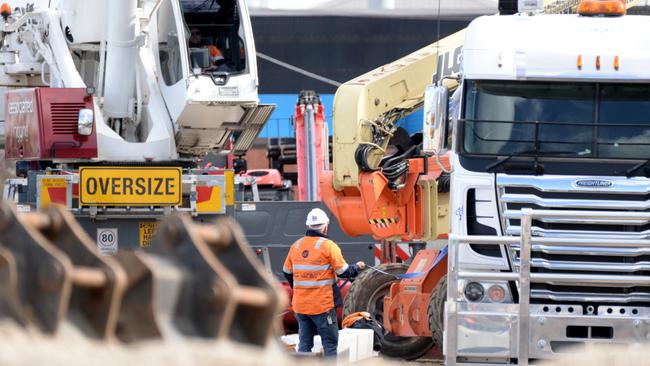Productivity crisis claims are overstated, although the current downturn must end soon
Productivity in Australia is not in a crisis, as some argue – but if the current low growth cycle drags on then we have cause for concern.

Productivity in Australia is not in a crisis, as some argue – but if the current low growth cycle drags on then we have cause for concern.
A new KPMG paper finds that Australia’s productivity growth cycle tends to go upwards for two years and downwards for three.
Our analysis – using the same framework as the US Federal Reserve – shows the previous high was in December 2022 as we emerged from the Covid lockdowns, which were – perhaps counterintuitively – a time of higher productivity.
There are some reasons for optimism, given the close correlation of our economy with the productivity cycles of the US economy, which is itself now showing signs of emerging from a low-growth period. These parallels include similar industrial structures, technological adoption rates, and labour market dynamics.
But there are also downside factors – the current low levels of both technology investment and business confidence, coupled with persistently elevated unit labour costs, may all impede a productivity growth uptick.
Our research shows that more than half of aggregate labour productivity growth in Australia can be explained by three factors.
The productivity that occurred in the last quarter – a momentum effect.
How many new workers entered the workforce – they will typically be less experienced or lower-skilled than existing workers. The current tight labour market has led to an unusually high participation rate, with marginal new workers coming from the pool of long-term unemployed, and unlikely to be as productive as other employees.
The addition of skilled foreign workers helps because they boost the productivity of native-born workers and bring in specialisation, new skills, ideas, and innovation. But this effect occurs with a lag.
There is also the ongoing impacts of “labour hoarding”, a Covid-era phenomenon where companies held on to workers, perhaps unnecessarily.
So given these factors – and the central role that the structure of Australia’s labour market has played in the current slowdown – what can be done?
Labour and migration levers that can be pulled to mitigate the cyclicality of productivity growth include:improved education and training for unemployed people, a redesign of migration to ensure supply and best utilisation of skilled migrants, and ensuring sufficient flexibility to allow for labour mobility.
On net overseas migration, there is mixed evidence during and after the Covid period, where the sharp fall in migration levels may have disproportionately impacted low-skilled workers or those in sectors less relevant to productivity growth.
But longer-term studies demonstrate the clear link between skilled migration and higher productivity.
The return of migrants to Australia since late 2022 has also helped improve the skills matching rate in the labour market – meaning targeted skilled migration and visa systems should be a priority.
Previous KPMG research has shown that while labour productivity is the key factor influencing wage growth across all industries, adopting universal policy settings is unlikely to generate optimum outcomes. Instead, the adoption of tailored policies for capital and labour – and an appropriate sharing of returns between them – on an industry-by-industry basis, is likely to increase economic potential.
The analysis also shows there is an inverse relationship between the rates of growth of the real producer wage and of employment. Higher real wages, unless backed up by strong productivity growth, can lead to lower employment levels. Industries using hi-tech assets in their production processes are more likely to be able to sustain wage growth.
Why was the Covid period one of high productivity? Headline labour productivity – GDP per hour worked – rose at a stronger rate as the fall in hours worked outpaced that of output. Smaller businesses reduced their hours worked substantially compared to larger firms, which on average have higher labour productivity. But when restrictions were eased, the labour market recovered rapidly with hours worked exceeding the growth of output.
The border closures impeded Australia’s access to skilled migrants, creating broadbased labour shortages amid recovering demand due to strong stimulus from the Reserve Bank and governments. This excess labour demand was then absorbed by workers increasing their hours substantially – which saw labour productivity growth tumbling into negative territory during 2022-23.
Productivity growth is likely to rise simply – and unfortunately – because some of the less-productive workers currently employed are likely to leave the workforce in the next few months as the jobless rate ticks up. So to mitigate the impact on them, there should be education and training programs tailored to this group.
But labour mobility restrictions are also part of the equation – it is important that employment frameworks achieve the right balance between ensuring workers are treated fairly at times of economic shocks and creating frictions in the labour market by imposing unnecessary costs on good employers.
Productivity, as Paul Krugman famously told us, isn’t everything but in the end it is almost everything. It goes in cycles – but there are things we can do to shorten the low-growth periods and extend the higher-growth times.
Dr Brendan Rynne is KPMG Australia’s chief economist



To join the conversation, please log in. Don't have an account? Register
Join the conversation, you are commenting as Logout